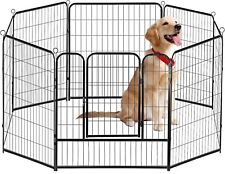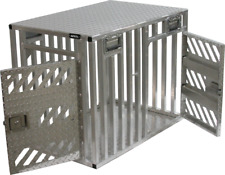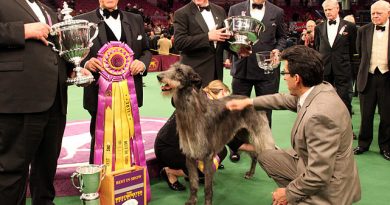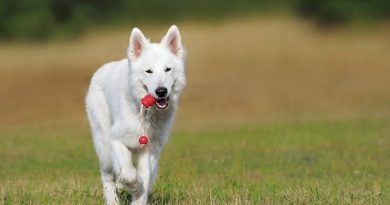Read Your Dog’s Body Language

"While there are fewer than a dozen types of barks, there are hundreds of different ear positions, tail positions, paw positions and more, which dogs use to communicate," says Lisa Mullinax, CPDT-KA (certified professional dog trainer-knowledge assessed), for 4Paws University Inc. "Body signals give dogs a much more elaborate language than vocalizations could."
Focusing on just a handful of body parts will give you a sense of the basics.
Eyes
Direct stares often signal confrontation. Pay particular attention to the pupils, says Dr. E’Lise Christensen, a veterinarian and behaviorist at NYC Veterinary Specialists. "Pupils that are dilated indicate a dog that’s not comfortable," she adds. Dogs with "soft eyes" that tend to avert their gaze are less likely to be confrontational.
Mouth
Tight lips are often a sign of stress, but the difference between uncomfortable and threatening can be subtle. Another clue might be changes in breathing: Going from panting to closed-mouth breathing indicates a shift to discomfort, and the opposite indicates increased happiness.
Two indicators of stress or anxiety are tongue flicking and yawning. "Yawning, when the dog is not relaxed or tired, is a common sign of stress or conflict," says Mullinax. "Sitting in the waiting room at the vet’s office, you may see a lot of yawning in the dogs there."
Ears
Erect ears reveal a dog on high alert, while ears pulled back show a dog that is anxious or stressed. And that spot on the back of the neck behind the ears? This area, called the hackles, sometimes stands up in a spiky row.
"This is called ‘piloerection’ and is the exact same thing as goose bumps in humans," says Mullinax. "Since arousal and aggression are closely linked, hackles often get labeled as a sign of aggression, but it is not always the case. Just like we get goose bumps at a scary movie or hearing a really heartwarming story, dogs get goose bumps when emotions run high."
Tail
The tail is perhaps the most expressive part of your dog’s body, but it might also be the hardest to read. A wagging tail is simply an indication of arousal, good or bad – it doesn’t mean the dog is friendly. A high, tense wag could indicate a potential for aggression, while a low wag could indicate nervousness. A happy, relaxed dog usually has a tail that swings in circles or from side to side. On the other hand, "tail between the legs" is a cliche for a reason: It indicates a scared or stressed dog.
Reading Specific Canine Behavior
Aside from communicating with body parts, dogs also convey information through behavior and posture. For example, bowing forward on the front paws, known as a “play bow,” is a sign of a dog’s playful mood. A slightly different bow is a greeting bow, which is usually accompanied by a stretch.
"Curving" is when dogs bend their whole body into a banana shape and move slowly in a circular fashion. This is a sign that the dog is trying to calm a situation.
One behavior that’s often misread is a dog that lies on its back. "Some dogs, especially those that are anxious, may roll on their backs to indicate their wish to end an interaction," says Mullinax. "This is sometimes misinterpreted as the dog offering its belly to be petted or a sign of submission.”
Humans Often Misunderstood
Being aware of these subtle hints will make for a more harmonious existence with not just your dog, but other dogs as well. Consider how we tend to greet new dogs – we look them in the eye, bend over them and put a hand on their heads. In dog language, says Christensen, "these gestures can actually be pretty threatening." That doesn’t mean you should curve into a banana, pant and wag your butt every time you meet a new dog. But having a walk-a-mile-in-their-paws perspective could put you and your four-legged friends closer to being on the same wavelength.













